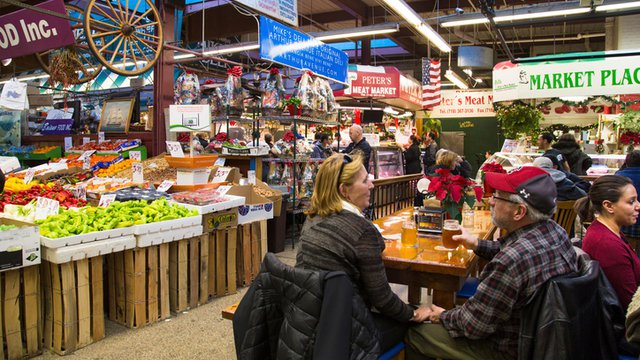Falling food prices are driving grocery store prices to decline, and this has some questioning the long-term impact of a price gap between grocery store and restaurant prices.
Prices on food away from home increased 0.2 percent, while prices for food at home declined by 0.2 percent, according to the US Bureau of Labor Statistic’s December 2016 Consumer Price Index Summary. This represents the eighth consecutive month food at home has experienced a decline with an overall decrease of 2 percent in 2016. All the major grocery store food group indexes decreased last year.
While the restaurant industry has also benefited from lower food costs, menu prices are trending upward with labor expenses on the rise.
“Restaurants tend to have a higher mix of labor-to-food costs than grocers, so the cost of labor is overshadowing the benefit restaurants are seeing from lower commodity costs,” said Adam Berebitsky, co-leader of BDO’s Restaurant Practice.
As the price gap widens between eating at home and at restaurants, are consumers noticing and shifting their food dollars away from restaurants?
According to the industry results through Q3 2016 reported in BDO’s most recent issue of The Counter, the answer seems to be yes. On average, public companies reported same-store sales decreases of 0.1 percent. The fast casual segment, specifically, also posted a decrease in same-store sales through Q3, a divergence from the 4.9 percent growth reported for fiscal year 2015. These findings signal that Chipotle’s sales decline is working against the segment average as the brand looks to repair its reputation and loyal customer base. Most industry observers agree that the price gap between restaurants and grocery stores is a contributing factor to the restaurant traffic declines seen during 2016, leading to softening same-store sales.
Restaurant Research LLC recently conducted a survey of 1,500 consumers to examine whether the general public has noticed the pricing gap and, if so, how they’ve reacted. More than 28 percent of respondents answered that they do not pay attention to prices differences, and nearly another 22 percent said that grocery store prices don’t seem cheaper. Meanwhile, just over four percent said they were unaware of the price gap as a result of great deals at restaurants. Therefore, more than half of the survey’s respondents admit they either don’t pay attention or have yet to notice the price gap. Another 14.4 percent have noticed the decline of grocery stores prices but have not changed their buying behavior in response.
That’s good news for restaurants, but what about the other 31.6 percent? These survey respondents said they have noticed that grocery store prices are cheaper — either by a little or a lot — resulting in a change in behavior geared at eat at home more frequently.
We’re curious. Are you concerned that traffic at your restaurant has been impacted by lower grocery store prices? Do you have any plans to raise or lower your menu prices this quarter? Have you changed your own buying behavior? Weigh in using the comment function below. If you’re a restaurant operator, be sure to share your region.


